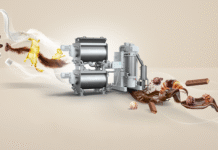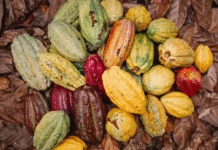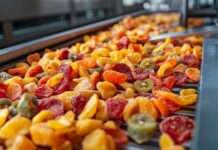
In India, there is a strong need for technological interventions, especially in markets like dairy. The productivity per cattle is low, traceability is inadequate, and the quality is not up to the mark. Bengaluru-based Stellapps offers dairy supply chain digital solutions to improve farm productivity, milk quality, and supply chain traceability.
Ranjith Mukundan, chief executive officer and co-founder at Stellapps Technologies, says, “We help unlock unprecedented value on a huge scale. We use an IoT-based system to integrate the dairy supply chain to improve productivity, quality, and traceability. Anything we do revolves around these three pillars.”

End-to-end digitalization
Founded in 2011, the startup has successfully applied its SmartMoo platform, including farm optimization, milk production, collection, and cold chain operations, to touch over 10 million liters of milk each day. The startup leverages advanced analytics and artificial intelligence through its full-stack IoT platform. The tech enables dairy ecosystem partnerships (insurance companies, veterinary services, and cattle nutrition providers) to drive data-led value realization for all stakeholders, especially farmers.

To date, Stellapps has deployed its solutions in more than 30,000 villages in India, with 2 million registered farmers and 1 million registered cattle on its platform. According to Mukundan, the company continues to scale rapidly.
Stellapps’ mooON
The per animal yield and quality of milk in India is not good compared to the developed countries (the average Indian cow produces only 1,200 liters annually, versus about 12,000 liters annually in the US or Europe). According to him, the availability of clean drinking water 24X7 alone helps increase productivity from 10 to 15%.

He says that farmers don’t undertake scientific cattle monitoring activities and don’t know about them. Stellapps’ mooON solution (consisting of the mooOn device and mooOn app) helps farmers regularly monitor their animals. The mooOn tool uses a pedometer for cattle that detects heat and various disorders based on their activity and resting behavior. The mooOn app is a herd management application that yields recommendations to optimize herd performance. “Our solutions are like Fitbit straps (worn around a cow’s leg), tabs on animals’ activity which makes it possible to optimize breeding, nutrition requirements, and preventive health care.”
Value-added services
Stellapps’ IoT platform acquires data via sensors embedded in the supply chain. The data obtained is transmitted to the Big Data Cloud Service Delivery Platform (SDP), where the Stellapps SmartMoo suite of applications analyze and process it. All progressive farmers get access to value-added services such as access to digital payments, credit, farm advisory, cattle insurance, and cattle nutrition to farmers. “If the overall farm-level productivity goes up, we offer credit products to the farmer — credit for buying a cattle or fund to buy more nutrition.”
Premium market linkage
According to Mukundan, alongside digitization, Stellapps is also establishing premium market linkages for milk to ensure that farmers get enhanced compensation for their high-quality milk. “The farmer not only increases the productivity by increasing the herd size but also gets per liter basis much better revenue realization by providing good quality milk.”

“Stellapps is getting an excellent response from farmers for these technological interventions. Now they know that they have to remain performance-oriented. Being too lazy will not help them get a good moo score, and they will not be able to get finance. However, if they start performing in the top 10 to 20%, then the money will start chasing them.”
Milking parlors for hygiene and quality
For stepping up the quality, Stellapps is moving the cold storage closer to the farmer and increasing tests to check adulteration. “Our target is to move testing closer to the farmer so that we can segregate the milk and grade it based on quality itself at the farm level.”
In the entire dairy supply chain, hygiene has been less than perfect. “Our target is to move hand milking farmers to automated milking to procure untouched milk. However, the bucket milk farmers can’t afford it. For them, Stellapps have set up milking parlors, where they can bring their cows for milking, for direct transfer to the bulk milk coolers,” says Mukundan.
Dairy sales bounce back to pre-Covid
The last week of March was very chaotic because of the disrupted milk supply chain. He says, “The HoReCa (Hotels, Restaurants, Cafe) segment is still muted, contributing about 30 to 35% to the consumption. However, we have observed that direct to consumer consumption has steadily gone up (70%) and made up the 30 to 35% loss in HoReCa. Luckily, this is one of the segments which has bounced back to the pre Covid levels.”
Mukundan believes in the big opportunity for suppliers like Stellapps to build a digital ecosystem that can help Indian farmers become exporters of platinum grade milk. “In the coming years, we want to double our operations from 10 million to 20 million liters a day and make sure that Stellapps digitalizes one-third of this Indian dairy platform. We are also exploring if our digital solutions can be replicated in other emerging markets,” he concludes.
IndiFoodBev — authentic, impactful and influential
An English-language food and beverage processing and packaging industry B2B platform in print and web, IndiFoodBev is in its third year of publication. It is said that the Indian food and beverage industries represent approximately US$ 900 billion in revenues which implies more than 20% of the country’s GDP. Eliminating the wastage on the farmside can help to deliver more protein to a higher number of the population apart from generating sizable exports. The savings in soil, seeds, water, fertilizer, energy and ultimately food and nutrition could be the most immense contribution that country is poised to make to the moderation of climate change.
To improve your marketing and grow sales to the food and beverage processing and packaging industry, talk to us. Our research and consulting company IppStar [www.ippstar.org] can assess your potential and addressable markets in light of the competition. We can discuss marketing, communication, and sales strategies for market entry and growth.
Suppliers and service providers with a strategy and budget for targeted marketing can discuss using our hybrid print, web, video, and social media channels to create brand recognition linked to market relevance. Our technical writers are ready to meet you and your customers for content.
The second largest producer of fruit and vegetables in the world is continuously expanding processing capacities and delivery systems with appropriate innovative technologies. We cover product and consumer trends, nutrition, processing, research, equipment and packaging from farm to thali. Get our 2025 media kit and recalibrate your role in this dynamic market. Enhance your visibility and relevance to existing markets and turn potential customers into conversations. Ask for a sample copy of our bi-monthly in print or our weekly IndiFoodBev eZine each Wednesday.
For editorial info@ippgroup.in — for advertisement ads1@ippgroup.in and for subscriptions subscription@ippgroup.in
Naresh Khanna – 10 February 2025
Subscribe Now











